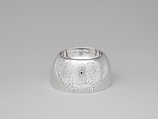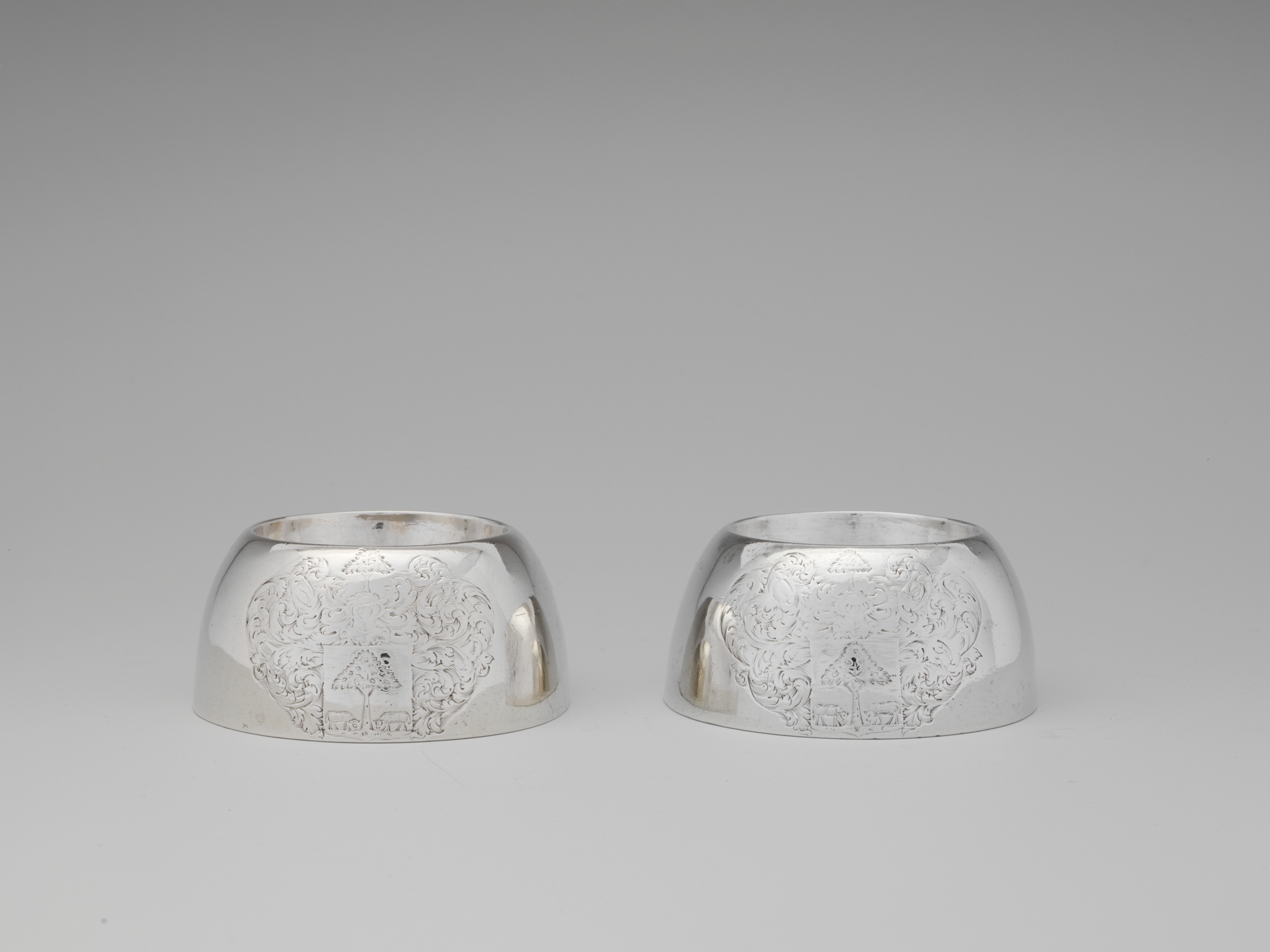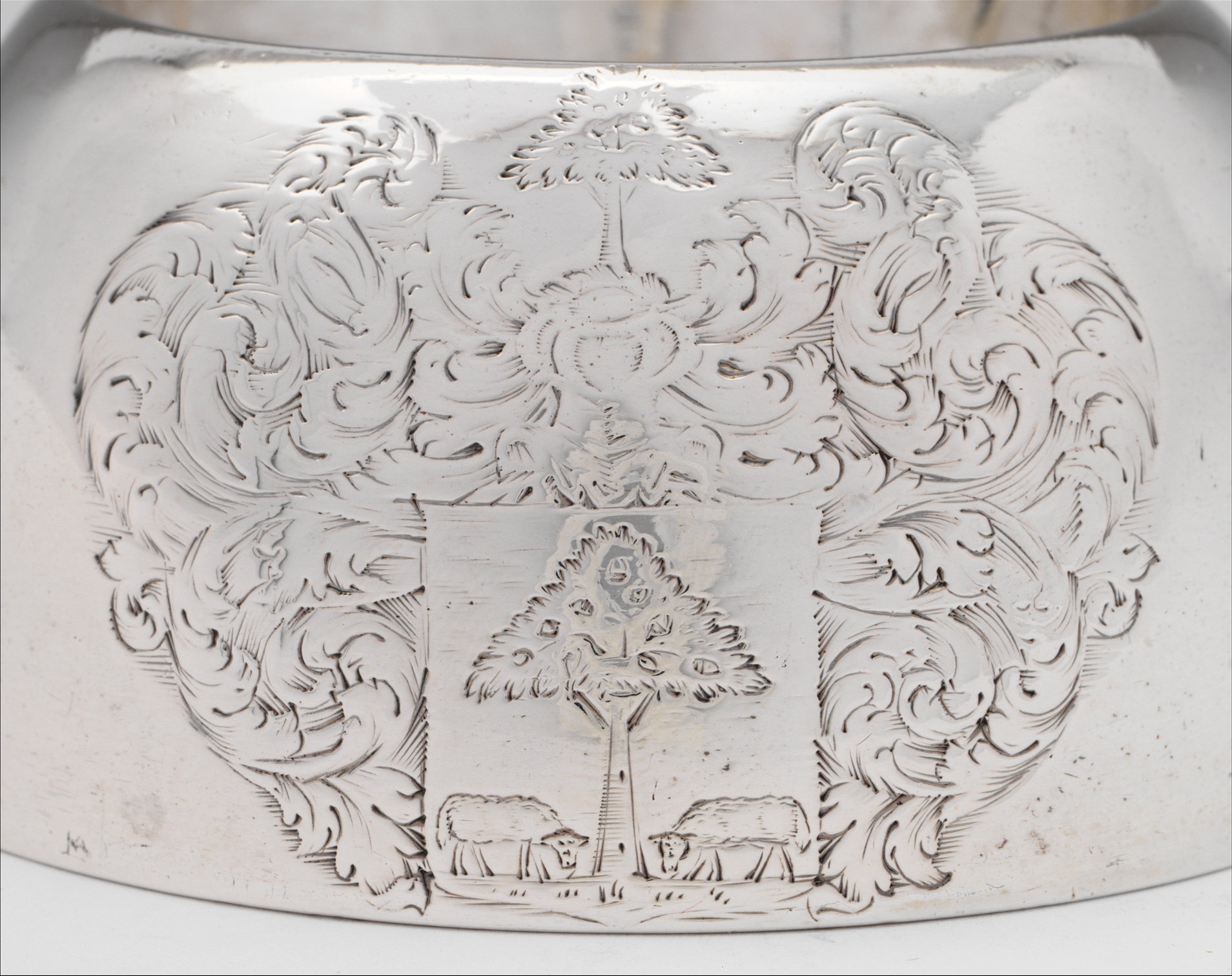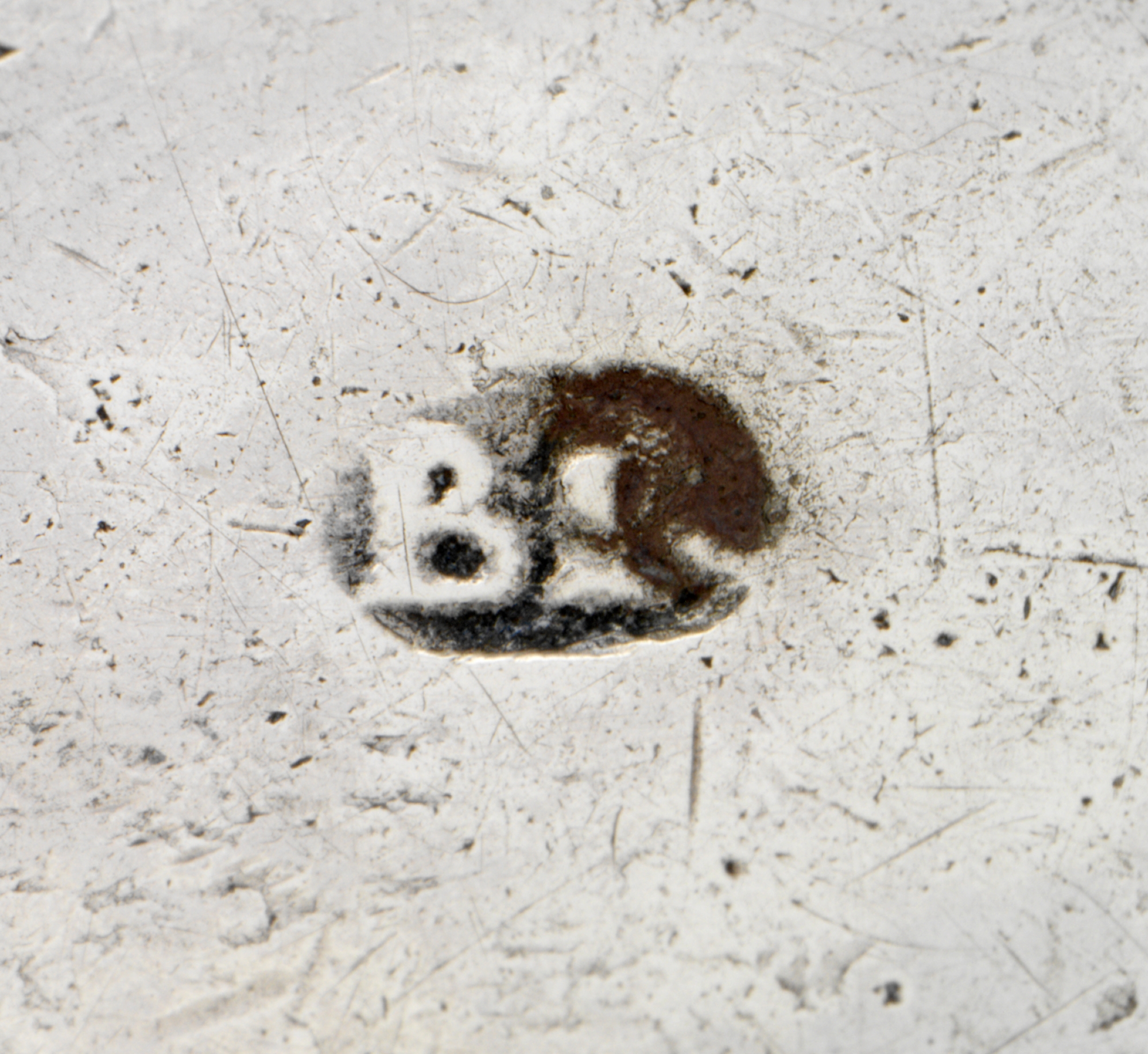Trencher Salt
Bartholomew Le Roux American
Not on view
By about 1700, as mores changed and salt became more easily obtainable, small individual saltcellars set one to each trencher, or plate, supplanted the large standing salt of medieval origin. This trencher salt and its mate are among the earliest American examples known. They are exceptional not only for their exquisite design and workmanship but also because they have survived as a pair. Their form is a simple and beautifully proportioned composition, which balances the concave hemisphere of the well with the convex curve of the sides. Embracing the front of each salt is a cartouche containing the de Peyster family coat of arms and crest and engraved with characteristically luxuriant, New York early-Baroque acanthus foliage. The maker, Bartholomew Le Roux I, left Holland (where he probably trained) for London in 1685 and not long thereafter moved to New York. He was the first of three generations of New York silversmiths.
(See 1997.488.5, .6 for pair.)
Due to rights restrictions, this image cannot be enlarged, viewed at full screen, or downloaded.
This artwork is meant to be viewed from right to left. Scroll left to view more.





